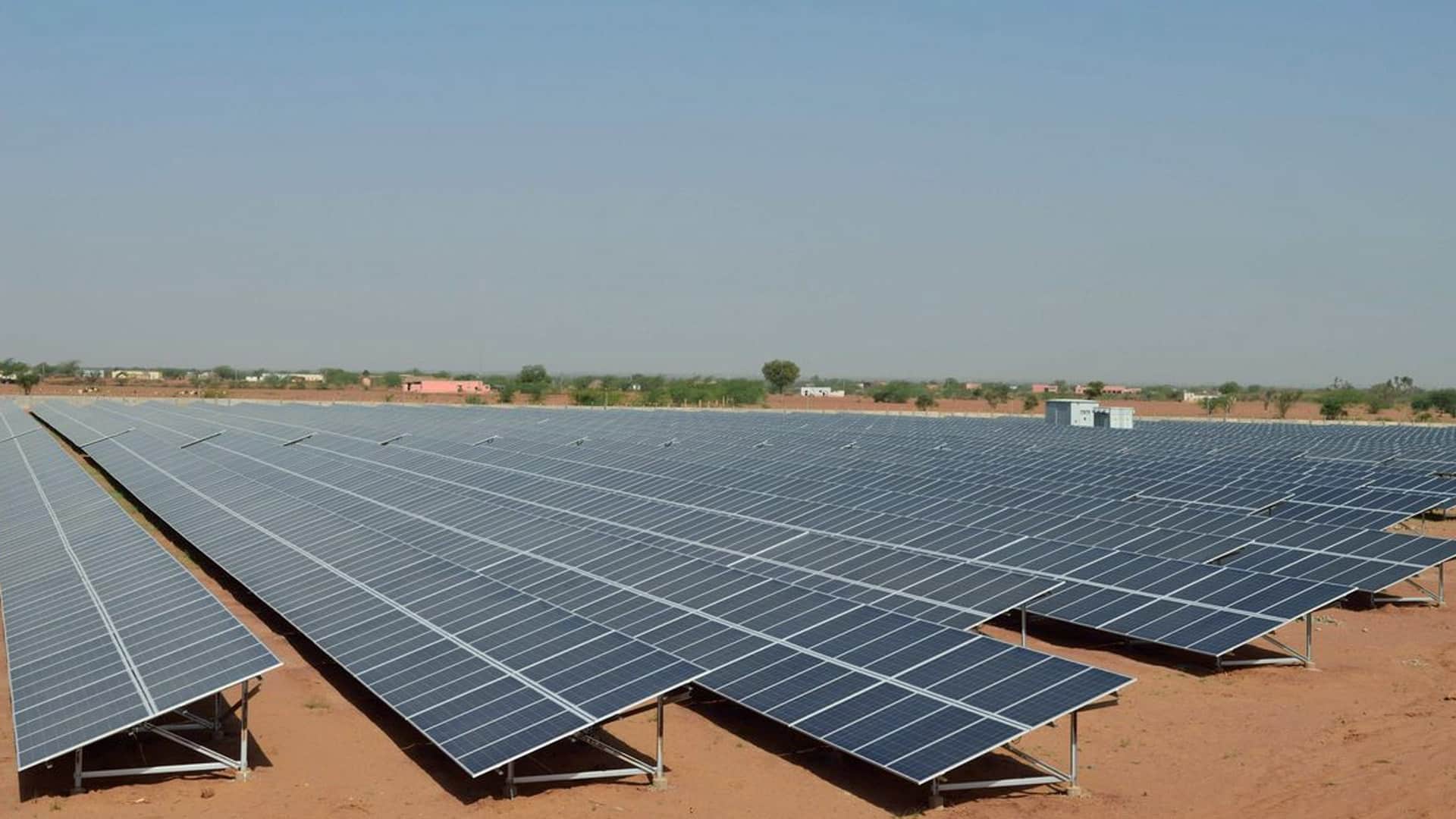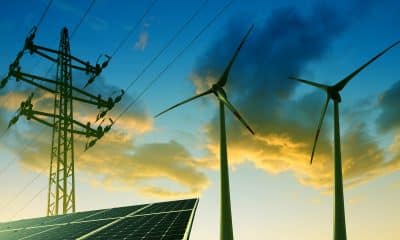Business
India’s renewable energy ambitions could exceed 500 GW, says ISA DG Ajay Mathur
India is poised not only to achieve its ambitious target of 500-gigawatts renewable energy capacity by 2030 but also surpass it, driven by an anticipated decline in battery prices by 2025, according to Ajay Mathur, Director General of the International Solar Alliance (ISA).
In an interview with PTI, Mathur, who has also been a member of the Indian Prime Minister’s Council on Climate Change, said global climate finance distribution remains skewed and that reforming multilateral development banks and facilitating renewable energy investments have been priority areas of India’s G20 presidency. India, as the G20 presidency, has invited ISA as one of the guest international organisations. Mathur said a fall in battery prices by 2025 could drive the widespread adoption of solar plus battery solutions, leading to the realisation of India’s ambitious target of installing 500 GW of renewable energy capacity by 2030 — one of the five commitments Prime Minister Narendra Modi made during the 2021 Glasgow climate talks.
Also read: e-con Systems working with agri, e-comm, EV firms to implement autonomous tech: Co-founder Maharajan Veerabahu
“If you are putting 500 gigawatts during the day, you also are setting up very expensive storage to ensure that you also use it at night. Now, expensive storage implies that you and I pay a higher price for electricity than what we can afford. In a country which is already starving for electricity; in a country where the ability to pay for electricity is limited, to look at a future in which more expensive electricity is available doesn’t seem right. “It is possible that the future may come around if battery prices fall. The ISA’s forecasts indicate that this would happen this year or 2024 or 2025. If that happens, then solar plus batteries become the energy source of choice because they’re the cheapest. In that case India will not only achieve 500 gigawatts, it will exceed the target,” he said.
When asked about factors driving the reduction in battery prices, Mathur attributed the decline to competition among battery manufacturers and the evolution of battery technologies. He explained that the reduction in the amount of materials used in batteries and the emergence of diverse battery types tailored to specific needs contribute to the declining costs. “Earlier, we had lithium phosphate batteries, before that we had lead acid batteries. We are also looking at vanadium redox flow batteries. Therefore, the development of not the same kind of batteries is key in the move away from expensive batteries to batteries that are more likely to fit the need,” the energy sector expert said.
With parts of the world reeling under record-breaking heat, massive floods and wildfires, Mathur emphasised the need to achieve climate targets to ensure that the global average temperature rise does not cross the 1.5-degree Celsius mark, compared to the pre-industrial (1850-1900) levels. “There is no doubt that every country in the world needs to change to the circumstances, manage the change and also at the same time make sure that we do not cross the ‘Lakshman Rekha’ of irreversible change,” he said. At the Paris climate talks in 2015, countries agreed to limit global warming to 1.5 degrees Celsius as compared to the pre-industrial levels to avoid extreme, destructive and likely irreversible effects of climate change.
Earth’s global surface temperature has risen by around 1.15 degrees Celsius and the carbon dioxide spewed into the atmosphere since the start of the industrial revolution is closely tied to it. In the business-as-usual scenario, the world is heading for a temperature rise of around 3 degrees Celsius by the end of the century. Last year was the fifth warmest and July this year was the hottest on record. Climate science says the world must halve emissions by 2030 from the 2009 levels to keep the chances of achieving the 1.5-degrees Celsius target alive. Mathur addressed the question of increasing pressure on developing countries to transition away from coal, emphasising the importance of affordable energy storage solutions.
He noted that solar energy plus storage is already cost-competitive with fossil fuels in certain contexts, and said the continued decline in battery costs will enable greater adoption of renewable energy sources. “As they (costs of batteries) keep declining, we will see more and more of electricity cost effectively coming from these sources rather than from fossil fuel-based sources. In my view, it is the development of new (energy storage) technologies which is far more important than the phasing out or phasing down issues that seem to have caught our attention,” the ISA DG said. Mathur pointed out that global climate finance distribution remains skewed, observing, “70 per cent of these investments in solar largely go to the OECD countries and China. All of Africa gets less than four per cent of the investment.”
“This is a challenge. Because if climate finance does not flow into those countries, then we have a problem. Climate finance is needed to provide the confidence to the private sector that it can invest. Consequently, grants, concessional loans and guarantees for the private sector are essential in order for us to move ahead,” he added. The ISA DG shared that India’s G20 presidency focused a great deal on the issue of the multilateral development bank (MDB) reform and on how financing could help jumpstart the renewable energy investment process. According to independent think tank International Institute for Sustainable Development, MDBs typically allocate around two-thirds of climate funds to mitigation initiatives and only one-third to adaptation projects.
Also, the concessional component of these multilateral flows remains relatively low, consistently below 50 per cent of total climate financing. Asked about some developed countries opposing the proposal of tripling renewables by 2030 at the G20 energy ministerial in Goa, Mathur said, “I don’t think that there is any country which opposes the growth of renewables. It is the tripling of the target that is a problem because if you have very high achievements already, then tripling may become an issue.” “What is important, of course, is what is the base year by which that tripling is counted? If the base year is 2005, it isn’t that much of a problem for almost anybody. If it is 2023, then there is a problem,” he added. According to the International Energy Agency (IEA), tripling renewable power capacity by 2030 is vital to limiting warming to 1.5 degrees Celsius. Sultan al-Jaber, the new president of COP28, has also called for tripling of renewable energy generation by 2030.
When asked about the role of carbon capture and storage as a mitigation strategy, Mathur said that while CCS could be a complement in certain sectors like cement manufacturing, it is not a substitute for renewable energy deployment. “If you look at the discussions which happened just 15 years ago, our view was that carbon capture and storage (CCS) is essential for the power sector, we actually didn’t see renewables growing to the extent that they are today. “Today, nobody’s talking about using CCS in a large sense for the power sector, because we see that renewable energy could meet almost all the needs in almost all the places. Similarly, we thought steel would be an area where CCS could be used. But now, with the hybrid technology that Sweden is working on, we may have steel production, which uses green hydrogen, instead of using coking coal,” he said.
“What is very clear is that there will be some amount of CCS that will occur”, but its scope has diminished as renewable energy technologies have rapidly advanced, he said. India is currently holding the G20 presidency and is scheduled to host the 18th G20 Summit in New Delhi on September 9 and 10. The summit will bring together leaders from G20 member countries and guest nations to discuss various economic reforms.





































Pingback: As many as 58 firms including top global players registered for IT hardware PLI